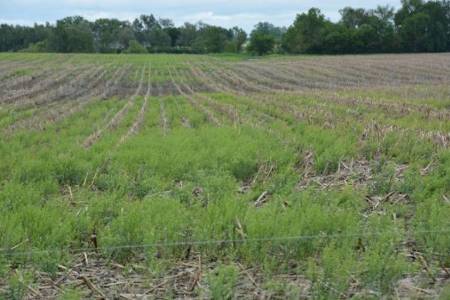Weed Management Considerations

Figure 2. A field previously planted to corn with heavy field pennycress infestation.
Whereas SCN can be managed through use of SCN-resistant varieties and crop rotation, presence of alternative SCN weed hosts can negate the benefits of these practices by providing a host for SCN to continue to accumulate in the soil. Winter annual weeds in rotated fields (Figure 1) or fallow fields before planting soybean (Figure 2) provide a host for SCN to continue to build up in the soil. It is important that these weeds are controlled proactively before SCN can complete its life cycle (25-30 days, depending on the soil temperature) on these weeds.
Some of the options for controlling winter annual weeds include applying a herbicide early in the spring in order to kill weeds that emerged in the fall. These weeds are more problematic in no-till fields; therefore, an early burndown would be recommended in those fields. Care should be taken when selecting an herbicide for controlling winter weeds in winter wheat or other cover crops since the herbicide can also kill the planted crop.
Source : sdstate.edu